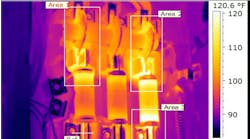The terms neutral, ground, grounded, and grounding often get confused — sometimes with tragic consequences. So what is the difference?
Let’s start with the neutral conductor. It’s not just another “ground conductor.” In fact, it may not even be grounded. It’s the neutral because of where it is derived from, namely the neutral point of the system. The neutral carries the unbalanced load back to the source.
The grounded conductor is the one that is intentionally grounded. In the most common wiring systems for industrial plants, commercial buildings, and residential buildings, the neutral is the intentionally grounded conductor. But it’s still carrying current under normal conditions and is not the same as the grounding conductor or any other conductor that’s part of the grounding system or bonding system.
The term “ground conductor” is especially confusing because the NEC does not define that term in Art. 100. It’s also confusing because it’s often used in reference to bonding conductors.
To avoid confusion, you need to mentally separate the load side of the electrical source (e.g., transformer, utility connection, etc.) from the supply side of the electrical source.
On the supply side, you’ve got your grounding electrode system. You don’t have grounding electrodes on the load side, except in cases where people don’t understand the difference between grounding and bonding and install those anyhow.
What you want on the load side is bonding. That’s a metallic path that connects metallic objects, eliminating differences of potential. The network of these paths ultimately connects to the grounding system, and thus we have the “equipment grounding conductor” (EGC).
That green conductor that’s run in the raceway is often referred to as the “ground wire,” but it’s really part of the EGC. Metallic raceway, such as electrical metallic tubing (EMT), intermediate metal conduit (IMC), or rigid metal conduit (RMC) is typically part of the EGC also.
In one plant, the installers decided to save money by using the EMT for the 277V lighting as the neutral. After all, the neutral is grounded, so why run a bunch of separate conductors when you have that metallic tubing already in place? Think about what we’ve covered so far. Do you think this was safe?
What this arrangement did was use the exposed, uninsulated metal surface of the tubing as the return path for the unbalanced load of the lighting. At 277V. Because that tubing was part of the EGC, the whole EGC was electrified. Every transformer case, breaker panel, pullbox, and junction box was energized to 277V.
Instead of flowing back to the supply transformer via the neutral, the current was flowing all over the place. Equipment failures were rampant, yet amazingly nobody had been killed by the time this error was discovered.
This case helps illustrate why you don’t make neutral-ground bonds (except where permitted by the NEC, such as at the supply) and why you don’t mix the neutral conductors and “ground conductors” when terminating receptacles or other devices. The neutral has an entirely different purpose from that of any other conductor, grounded or not.




